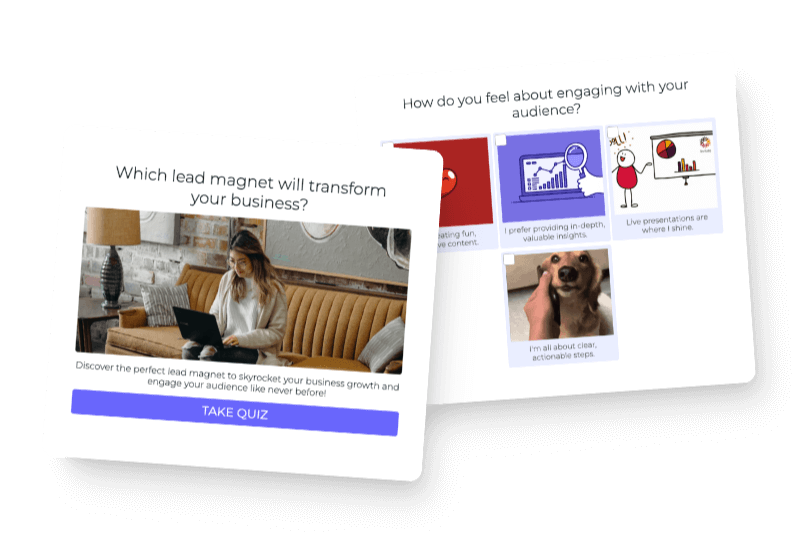Conversational forms are one of the best ways to generate leads from your website and social media. A conversational form re-creates the conversations you would have with your potential customers to discover how you can best help them, or which products of yours are the best fit for them. This is useful to the person filling out the form because they can get an answer to what they want in real time. It is also useful to you because after someone fills out a conversational form they become a lead 40% of the time.
In this article I want to talk you through the specifics of how conversational forms are built using Interact, and the psychology of why they are so effective for lead generation, so you can create your own forms and begin optimizing your lead generation conversion rate from existing website and social media traffic.
Why Conversational Forms are Effective Lead Magnets
A conversational form starts with the premise “What can I do for you?” meaning that the whole purpose of the form is to help the person who is filling out the form get something of value. Because the person filling out the form is seeking something of value when filling out the form, they are more likely to fill it out. Then, if you ask them if they would like to hear more from you on the same topic that brought them to your form in the first place, then they are likely to opt-in as a lead if you have done a good job of having a positive conversation with them through your form.
The difference between conversational forms a traditional forms is a conversational form is framed as “How can I help you?” versus a traditional form where it is asking “Can I have your information?” and you can plainly see why the person on the other side of the form would be more likely to fill out the form that offers to do something for them.
Types of Conversational Forms
Diagnostic Form: A diagnostic conversational form helps the person filling out the form determine what their problem is in a particular area. Your form will ask them questions and assign points to the possible issues the form filler could be facing, and then provide a recommendation about what the issue is.
Assessment Form: An assessment form helps the person filling out the form determine their status or if they have a problem. The form filler answers a set of questions before being assessed to determine their current status.
Preference Based Form: A preference based form asks the form filler to state their preferences before providing a recommendation to them in a particular subject area.
Product Match Form: A product match conversational form asks a set of questions of the form filler before offering up a product or set of products that are the best match for that person.
Conditional Logic Form: A conditional logic form uses a flow chart style logic system to provide very accurate feedback and recommendations to the person filling out the form based on their wants, needs, interests, and preferences.
How to Create a Conversational Form With Interact
Interact is a top option for creating conversational forms if you want an easy to use interface, direct integration to your email marketing software or marketing automation software for managing leads collected, and great analytics.
To build a conversational form with Interact, you will first choose which type you want to create. Note that in Interact we often use the word “Quiz” to mean the same thing as “Form” because they function the same way in our system.

You can also use our AI Conversational Form builder, which will read your website, make suggestions for what type of form would work best for you to generate the most leads, and then create the whole form for you, while giving you full editing capabilities.
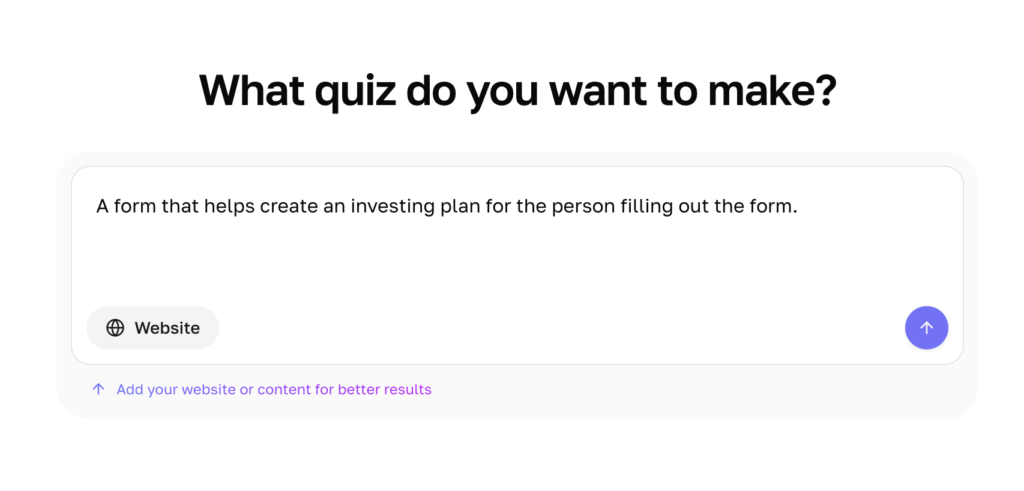
You can also choose pre-made form templates that have been created based on the questions people are asking in each type of industry. We run our own research to determine what audiences are most likely to respond to, and then we create these templates based on our own best practices.
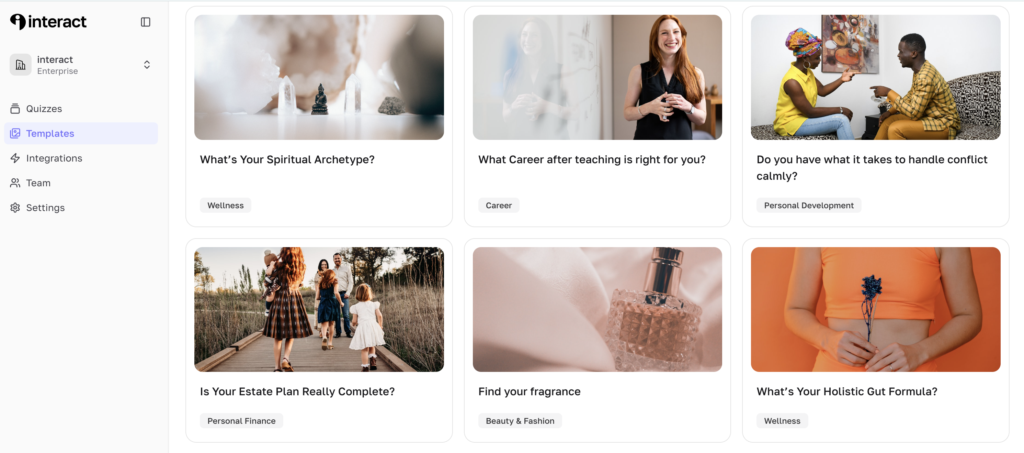
Continuing on with Interact AI Form Builder
You can’t go wrong with any option you choose in Interact, each route has been perfected over 12 years since we started building the tool in 2013, and quizzes built with Interact have generated over 100 million leads. I’m going to continue with the AI route because it is the fastest to build my form and uses best practices from everything Interact has learned.
The AI suggested titles and I like the first one, I will probably modify it later, but it’s a good start.
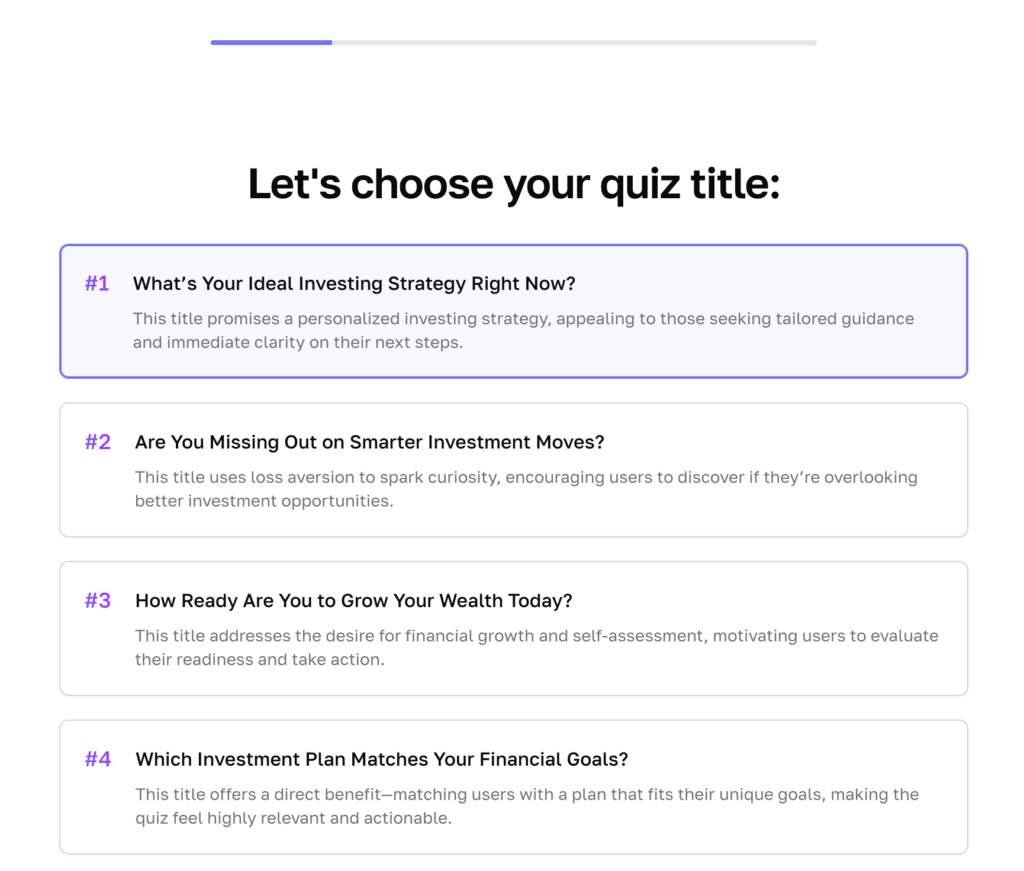
I’m creating an investing strategy form. That will both entice my ideal audience to fill out the form, and also gather super valuable information about who is in my audience.
I will specific some questions I want my form to ask, based on the type of data I want to gather, and how I want recommendations to be tailored in my investment plan form.
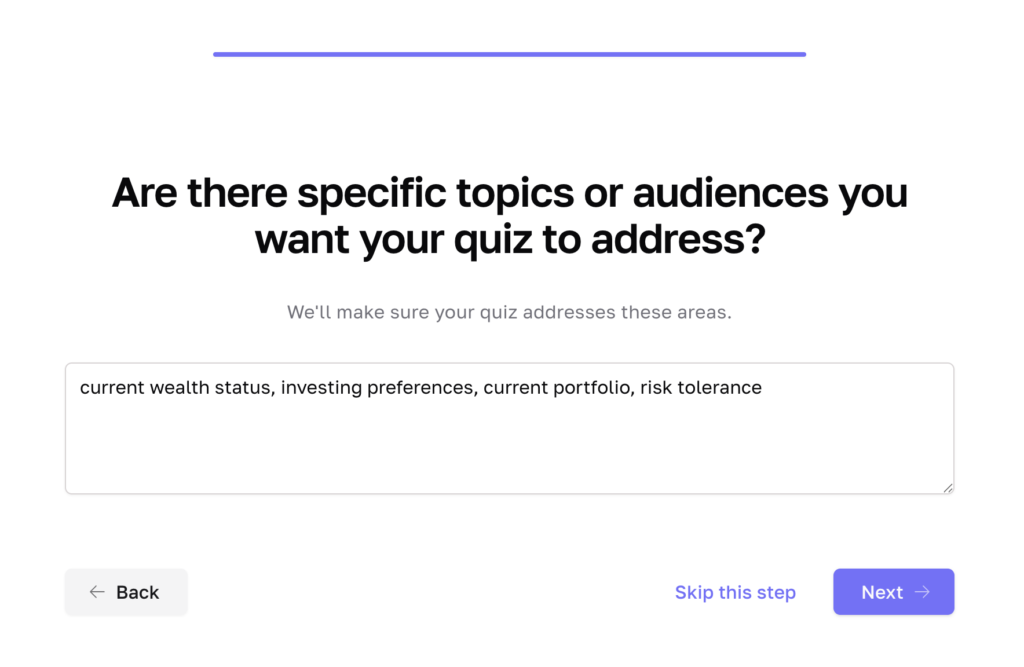
Once the form loads in, I make some copy modifications to the cover page. I actually like the image the AI chose, and generally the language is okay, just a little too verbose for my taste so I shortened it up a bit.
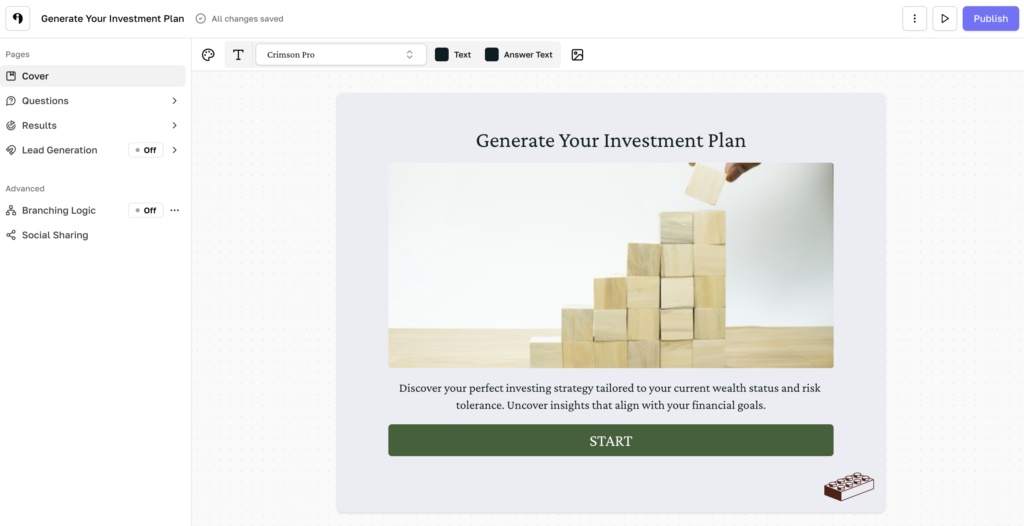
I’ll do the same thing with the questions, minor modifications to the text, but generally I’m happy with the AI output. In my example here I’m helping people generate an investment plan based on the criteria I put into the AI builder, so this works for me with small changes.
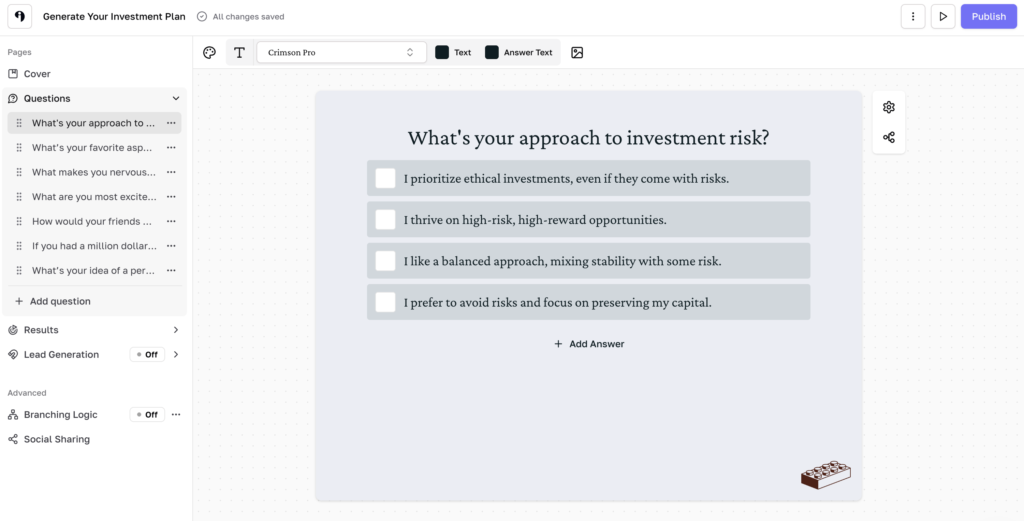
The scoring system for this form is simple on the backend. There are different recommendations for investment strategies, and each answer choice from each questions correlates to one or more of the recommendations for investment strategies. Whichever strategy ends with the most correlations is the one that is shown to the person filling out the form as their recommendation.
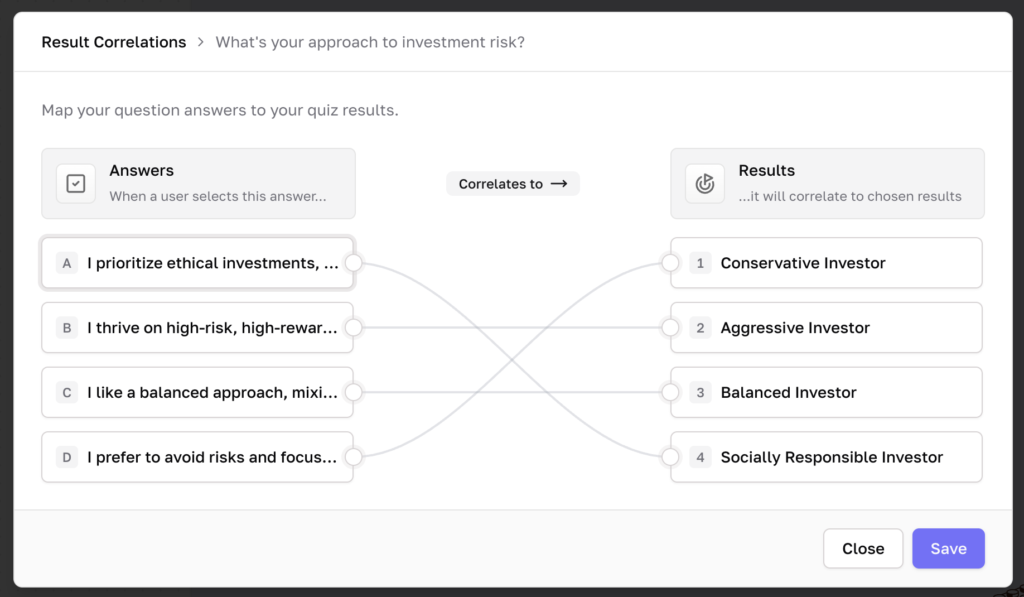
When you set up the outcomes of the form, you can specify different outcomes based on how people answer the questions in the form. This allows you to satisfy the reason why someone would fill out the form in the first place.
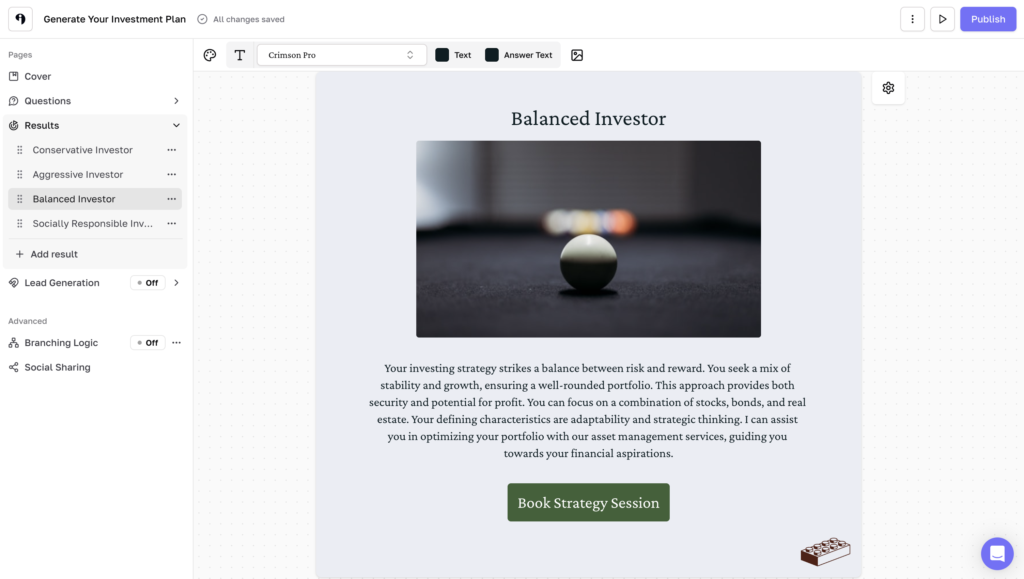
Then you can connect your email marketing software. Interact has direct integrations with all the major players, including Flodesk, Kit, HubSpot, ActiveCampaign, Klaviyo, and more. I’m connecting to Flodesk for my example form.
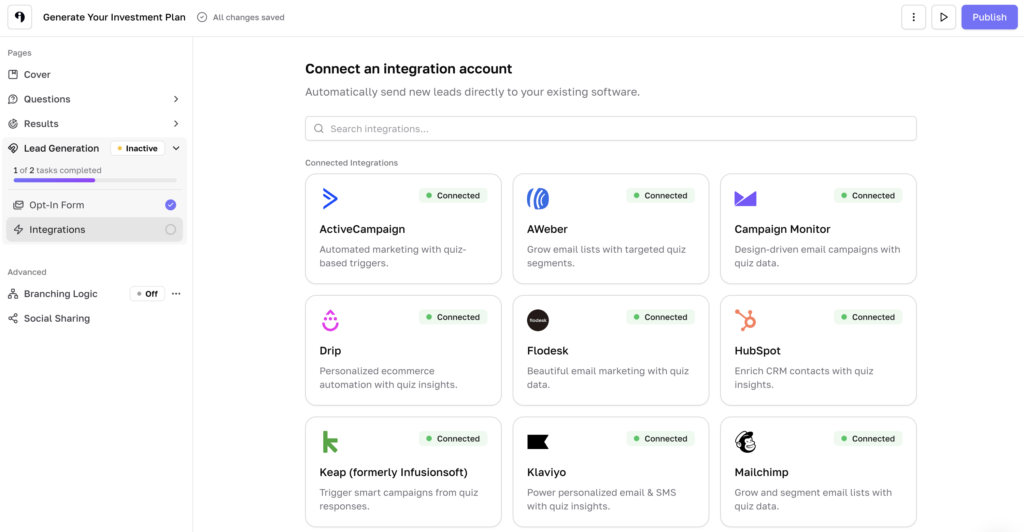
You can customize the fields you want to collect in the form. Interact offers default form fields for basic information, and custom fields for open ended text responses you want to collect. We stack up the data collection at the end of the form because people are bought in by the time they answer the more conversational questions in your form, and they are curious to know their result.
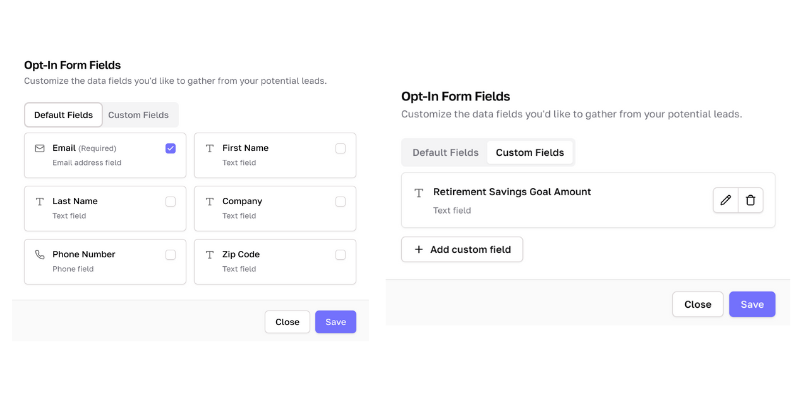
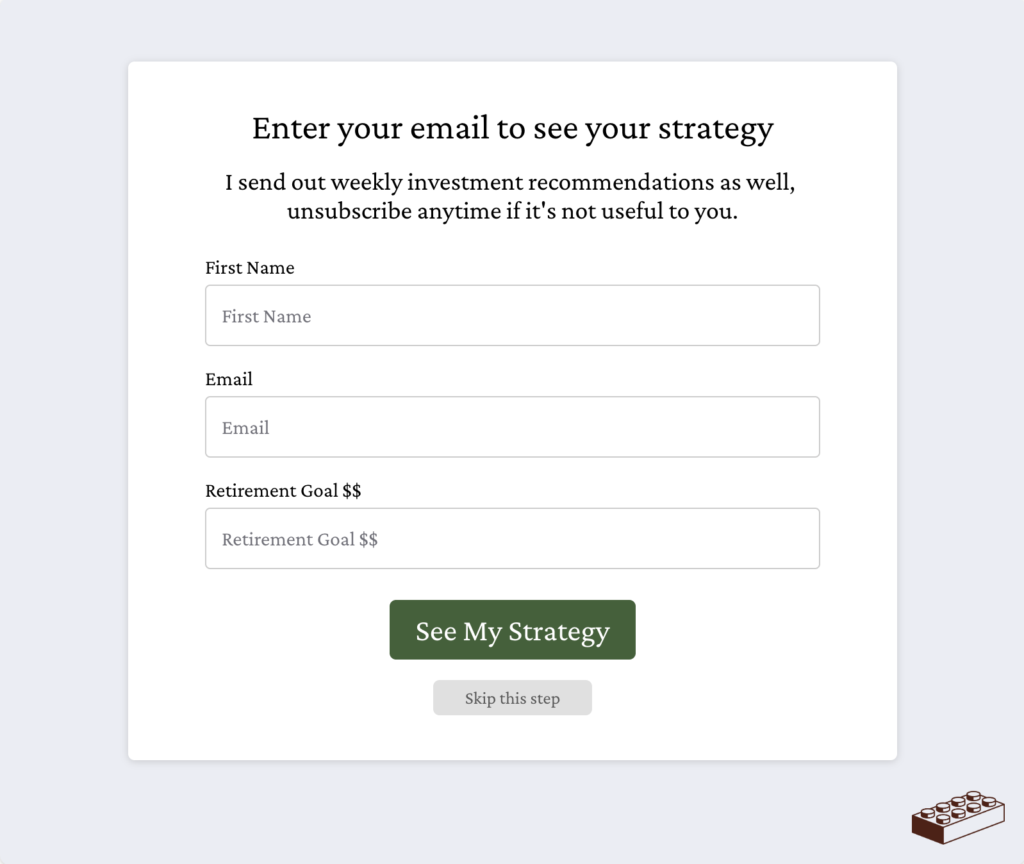
Now you can connect up the data from the form into your email software. You can segment based on outcomes and based on individual question responses. It’s all super easy and simple with an if/then interface.
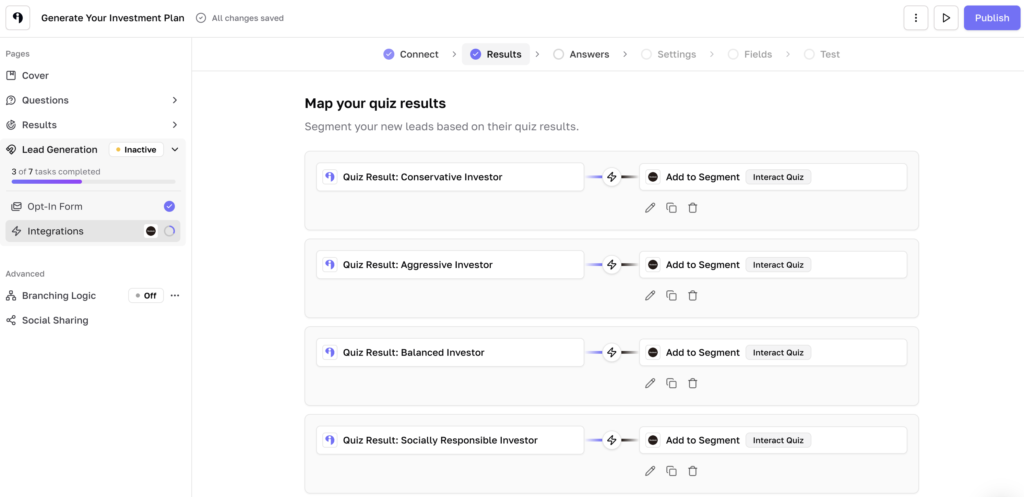
You’ll also see lead information for everyone who fills out a form, so you can connect to Google Sheets or Excel by downloading a .CSV of all responses.
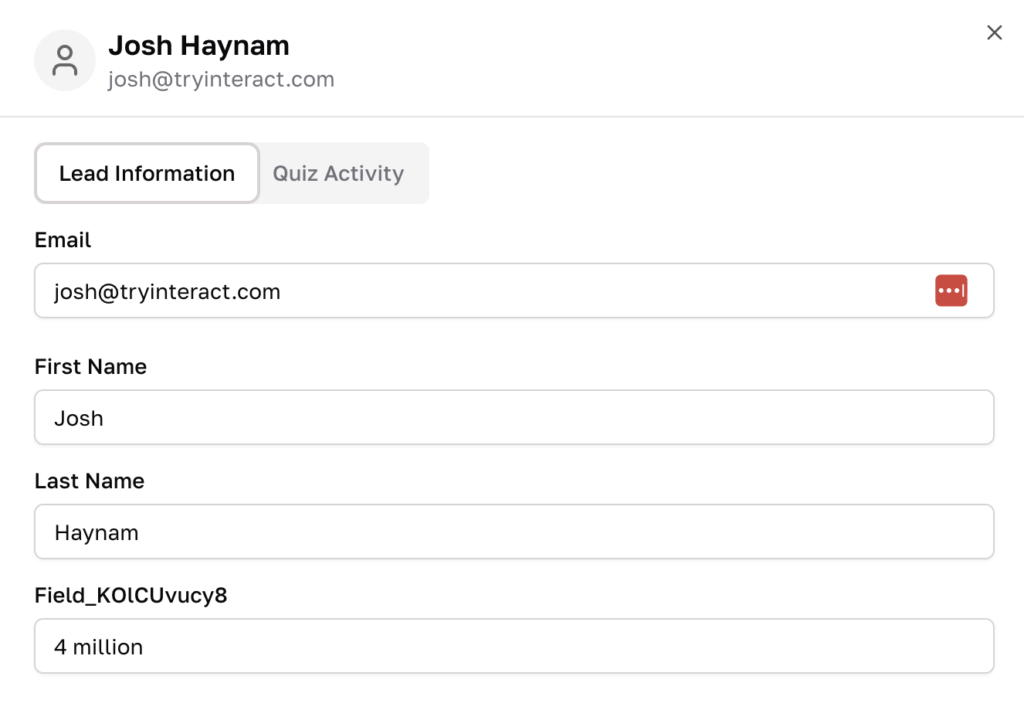
To share your form, you can embed into your website so it matches your whole brand and keeps people on your domain, or you can get a URL for the form and share that with people directly.
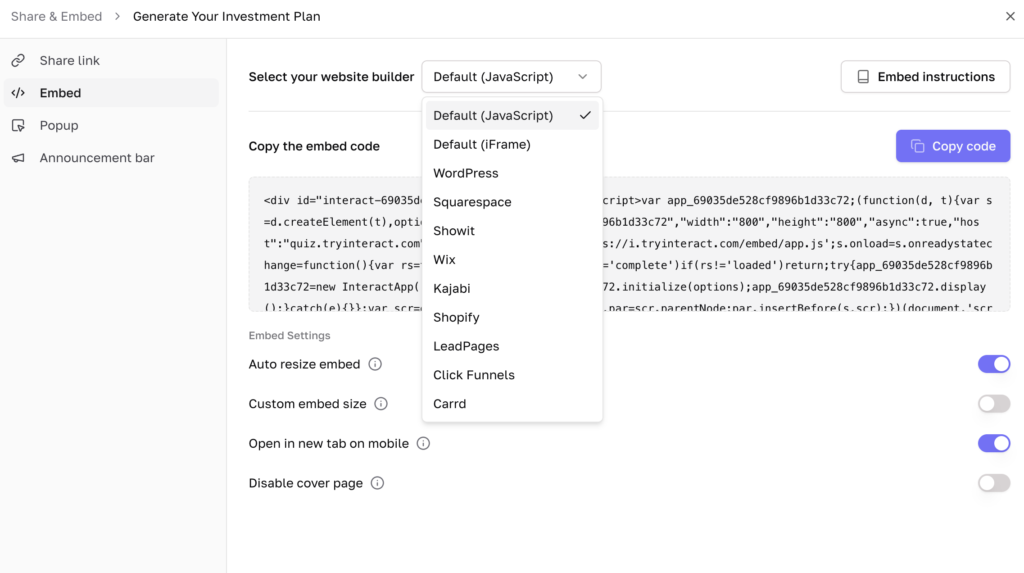
As people start to respond, you can see high level data on how people are responding to questions, as well as the full lead data for each person who completes the form.
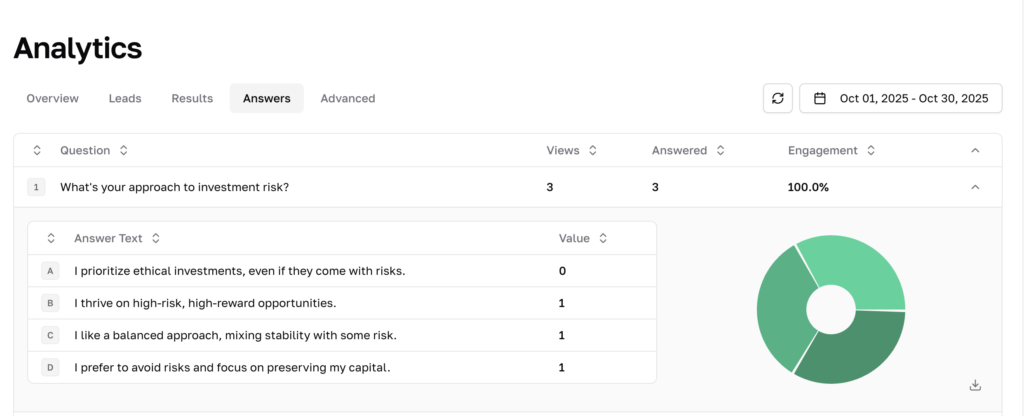
Creating Conversational Forms with Interact is Easy, Fun, and They Convert Very Well
The feedback we get from our customers is that creating forms with Interact is fun to do and when they launch those forms the forms are super good at collecting leads.
